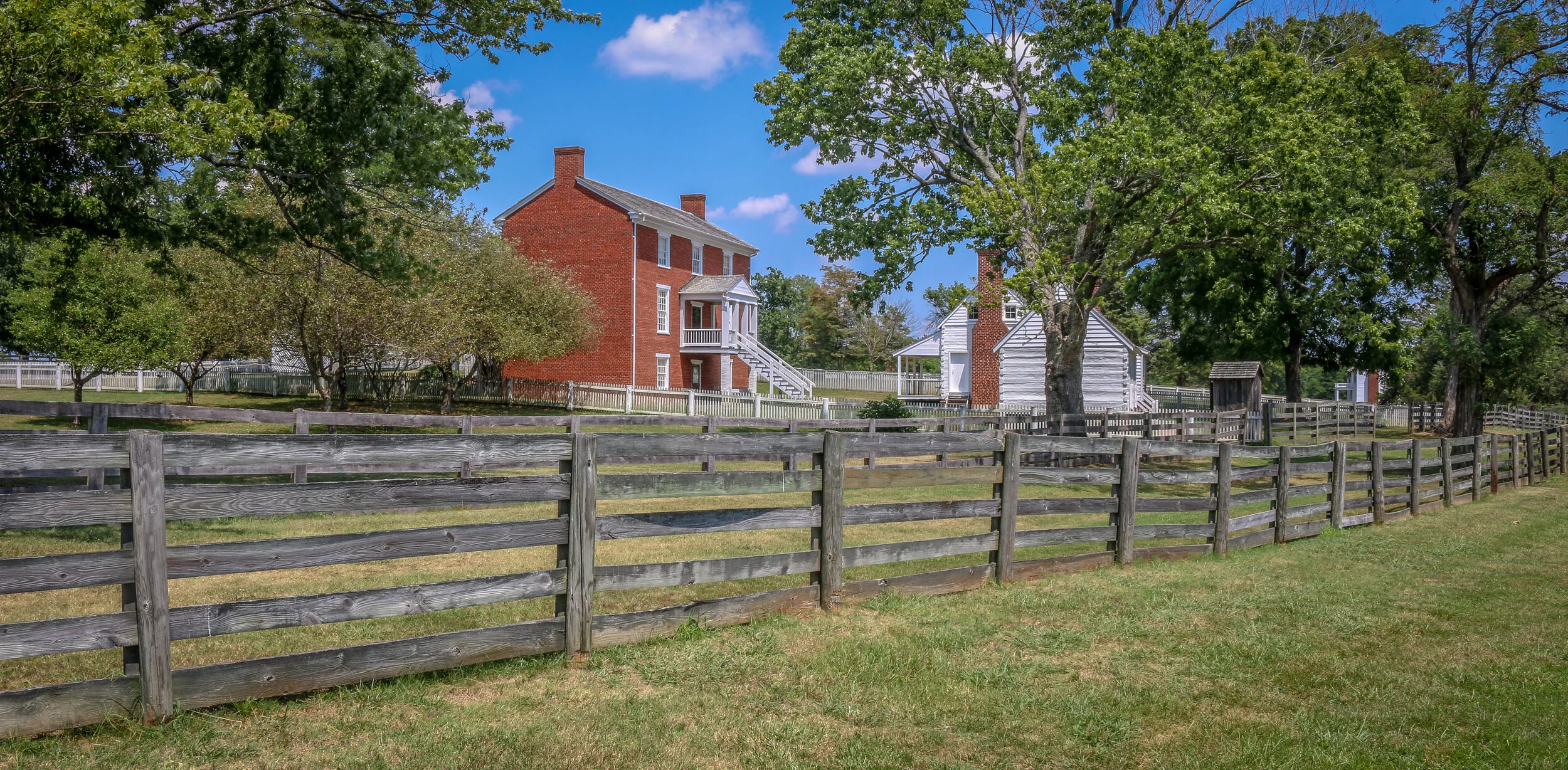After the siege of Petersburg and the fall of the Confederate Capital at Richmond, General Robert E. Lee led his Army of Northern Virginia west with the hopes of turning south to North Carolina and joining with General Joseph Johnson’s army there. They moved towards the train depot at Appomattox Station hoping to find much needed supplies waiting for them there. Union General Phillip Sheridan and his cavalry arrived first, capturing the supply trains and forcing Lee to turn his thoughts towards Lynchburg instead. Surrounded by Union troops, they made one final push at dawn on April 9th, 1865. It didn’t take long to realize that they were surrounded and Lee called for a meeting with Ulysses S. Grant to discuss the terms of surrender.
The site chosen for this conversation was the home of Wilmer McLean in the tiny village of Appomattox Court House. The generals met in the parlor, recreated above, to hammer out the details. The terms offered were very generous as the Confederate soldiers were to be immediately paroled and even allowed to keep their horses and sidearms. Their parole papers were printed in the nearby Clover Hill Tavern. The Southerners marched into town, stacked their rifles, turned over their cannons and marched out. While the surrender of Lee’s Army of Northern Virginia was not the end of the Civil War, there was little chance or hope for the Southern cause in its aftermath. The war would technically drag on until early summer, with skirmishes across the south, but the surrender at Appomattox Courthouse was the beginning of the end. Four long years of fighting which cost over 600,000 lives was finally nearing its conclusion.
Perhaps surprisingly, there was no initial attempt to preserve the site of the surrender, and the town dilapidated over the next hundred years. The McLean House was disassembled in 1893 with the hopes of reassembling it in Washington D.C. as a museum, but that plan never materialized and the deconstructed house was carried off to different places around the area. in 1930, Congress passed a bill to erect a monument on the site but it wasn’t until 1954 that the park began to take shape. Many of the original buildings in town were gone, but some survived and got a much needed overhaul to their 1865 appearance. The courthouse, which had burned to the ground in 1892, was rebuilt and now serves as the Park’s Visitor Center. The McLean House was rebuilt to appear as it did on that fateful day in 1865.
We enjoyed our visit to this park profusely. Although it was a long ride to get there and a long ride back, it was worth the journey to cap off our tour of the war’s Eastern Theater. As we have in our visits to many of the battlefields, we enjoyed the History That Doesn’t Suck podcast episode about the events leading up to and including the surrender at Appomattox. We wandered the grounds seeing the buildings that remained and reading up on the people who lived there. The historic buildings are great and I’m so happy that this whole area is being interpreted and protected by the National Park Service. With this visit, my look at the Civil War comes to a close, for now at least. I hope you’ve enjoyed coming along for the ride.
The photos below come from a recent visit to Appomattox Court House National Historical Park near the town of Lynchburg, Virginia. It was the site of the surrender of the Army of Northern Virginia which effectively ended the American Civil War. Civil War Chronicles has traced the major battles of the Eastern Theater of the war through photos and brief histories. Click on any photo to enlarge it. All photos are available for sale and licensing. For more information, check out the National Park Service’s Appomattox Court House website HERE.

